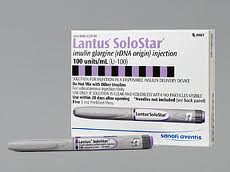Eli Lilly's ($LLY) decision to pull the plug on development of long-acting insulin candidate peglispro was not a big surprise after the company put the program on the back burner earlier this year over safety risks. While no company likes to give up on a drug on which it has invested considerable time and money, peglispro was facing a market that is getting increasingly challenging, in part because of Lilly's own biosimilar effort aimed at insulin kingpin Lantus, one with huge upside potential.
Lilly said on Friday that it was nixing the program rather than spending more time and money figuring out how to deal with liver toxicity issues the drug candidate has displayed. Indianapolis, IN-based Lilly will take a $55 million charge in the fourth quarter as a result but said that expense will not affect its forecast for the year.
When Lilly embarked on its effort with peglispro, it was hoping to pick up a significant piece of the market for a long-acting insulin that Sanofi's $7 billion drug Lantus pretty much had to itself. But the market has changed significantly this year. Sanofi ($SNY) got approval in the spring for its Lantus follow-up drug, Toujeo, which it is pushing hard. That was followed in September by an FDA nod for Novo Nordisk's ($NVO) long-acting insulin Tresiba after a two-year delay to satisfy the FDA over its heart health risks. Market watchers are paying close attention to see if those two get into a price war over their new products.
 Perhaps the biggest disruption, however, may come from the Lantus biosimilar that Lilly developed with Germany's Boehringer Ingelheim. The two have already gotten it approved in Europe and expect to get it approved in the U.S. next year. Sanofi had the copycat drug tied up in court over patent issues, but the three settled those several months ago. Sanofi agreed to let Lilly and Boehringer Ingelheim launch their drug at the end of next year in exchange for royalties on their pen-packaged version of the biosimilar.
Perhaps the biggest disruption, however, may come from the Lantus biosimilar that Lilly developed with Germany's Boehringer Ingelheim. The two have already gotten it approved in Europe and expect to get it approved in the U.S. next year. Sanofi had the copycat drug tied up in court over patent issues, but the three settled those several months ago. Sanofi agreed to let Lilly and Boehringer Ingelheim launch their drug at the end of next year in exchange for royalties on their pen-packaged version of the biosimilar.
When Lilly held off work on peglispro earlier in the year, Bernstein analyst Tim Anderson was one who saw some benefit for Lilly's biosimilar effort in the move. He figured by not having to focus peglispro in the mix, Lilly could put more muscle into marketing the Lantus biosimilar and discount it more deeply without the worry of cannibalizing sales from its own long-acting insulin. Anderson figures Lilly and its partner could get as much as 40% of the Lantus market and see sales by 2020 exceed the $1.3 billion he initially forecast for it.
Lilly also has other diabetes treatments to fall back on, like powerhouse Jardiance, another drug it shares with Boehringer Ingelheim. While Q3 sales missed forecasts, the two are working to distinguish it from other SGLT2 meds with trial data showing that the med cut the risk of heart attack, stroke and death from cardiovascular causes by 14% in high-risk Type 2 diabetes patients.
- here's the statement
Special Report: The top 10 patent losses of 2015 - Lantus | The 10 best-selling drugs of 2013 - Lantus